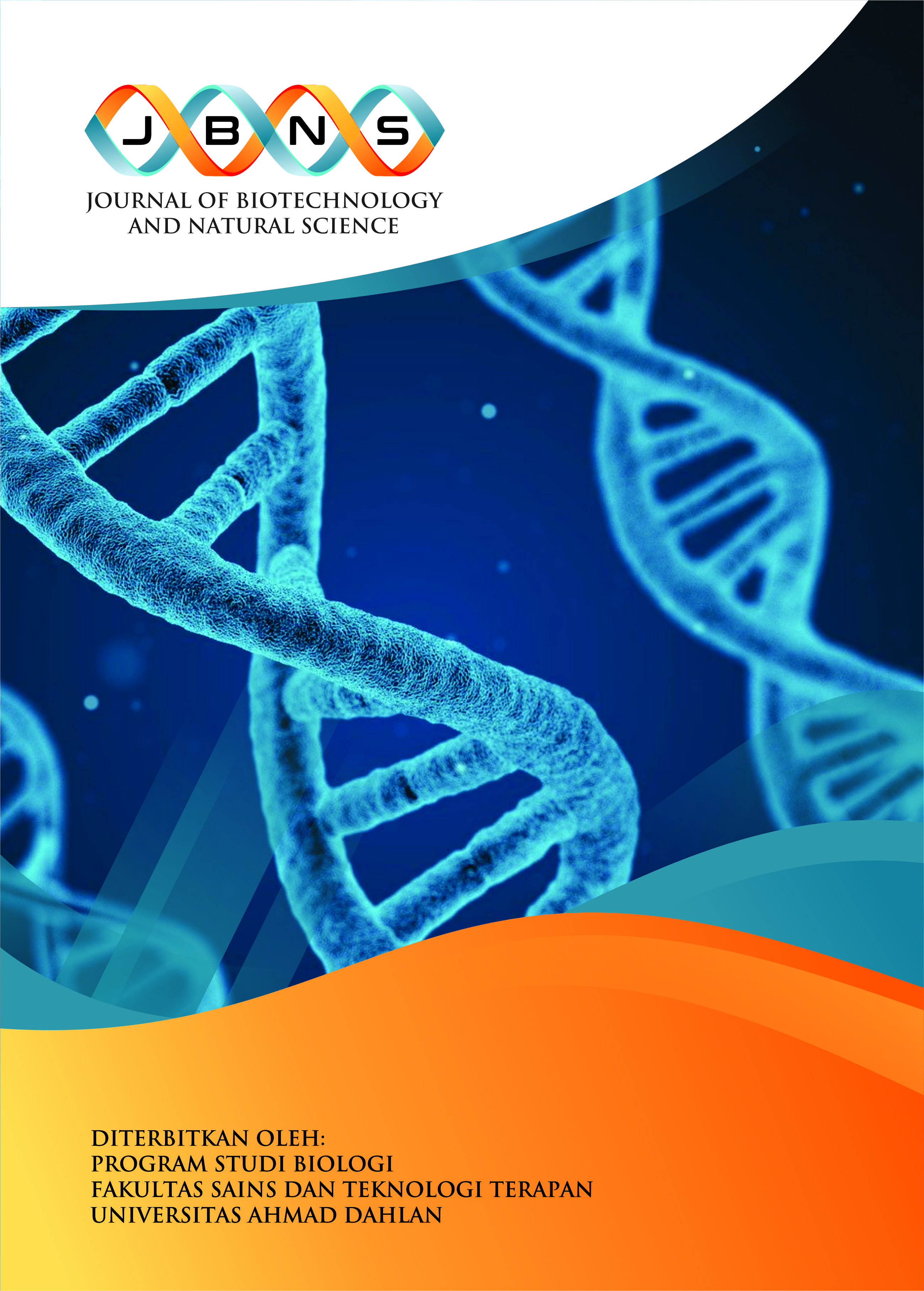Macrofungi Diversity in Wisdom Park UGM, Yogyakarta
DOI:
https://doi.org/10.12928/jbns.v3i2.9743Keywords:
Biodiversity, Macrofungi, Mushroom, Urban forest, YogyakartaAbstract
Indonesia's warm and humid tropical climate provides an ideal setting for the flourishing of fungi. Fungi are pivotal in the intricate balance of nutrient cycles and soil fertility within forest ecosystems. They can be broadly categorized into two types: microscopic fungi, which are minuscule and require observation under a microscope, and macroscopic fungi, which can be identified based on visible morphological features without additional tools. Forests, with their limited sunlight and high humidity due to the dense canopy of trees, serve as fertile grounds for a myriad of fungal species. This research aims to analyze fungal diversity using the exploratory survey method, involving direct search and observation of macrofungi. The sampling was conducted in May 2023 within the Wisdom Park UGM area, covering an area of 3,762.12 m² with coordinates 7° 46'09"S 110°22'59"E. The findings revealed a commendable diversity in terms of shape and size. However, the color palette of fungi in the area exhibited limited variation, primarily consisting of subdued white and brown hues. Some identified fungal species include Ganoderma sp., Mycena sp., Trametes sp., Lepiota cristata, and Panaeolus fimicola. These fungi predominantly thrived on substrates such as trees, soil, leaf litter, and decaying wood.
References
Mumpuni, A., Ekowati, N., Wahyono, D. J. (2018). Inventarisasi Makrofungi Koprofil pada Kotoran Hewan Ternak Herbivora di Wilayah Eks-Karesidenan Banyuman Provinsi Jawa Tengah. Prosiding Seminar Nasional, ISBN: 978-602-1643-617.
Nasution, J., & Susilo, F. (2022). Buku Ajar Pengantar Taksonomi Tumbuhan Rendah. Medan: PT. Nasya Expanding.
Nurhayati. (2021). Inventarisasi Jenis Jamur Makro di Kawasan Stasiun Penelitian Soraya Kecamatan Sultan Daulat Kota Subulussalam, Aceh. Jurnal Riset dan Pengabdian Masyarakat, 1(2), 273-279. https://doi.org/10.22373/jrpm.v1i2.1122.
Panjaitan, D., Wardhana, V. W., Febiolasari, S. D. (2022). Keanekaragaman Jamur Makroskopis di Kawasan Hutan Universitas Palangka Raya Kalimantan Tengah. Jurnal Kajian Ilmiah, 22 (2), 153-162. https://doi.org/10.31599/jki.v22i2.1145.
Putra, I. P. (2021). Panduan Karakteristik Jamur Makroskopis di Indonesia Bagian 1 - Deskripsi Ciri Makroskopis. Jurnal Penelitan Kehutanan Wallacea, 10(1), 25-37. https://doi.org/10.18330/jwallacea.2021.vol10iss1pp25-37
Rahma, K., Nursalmi, M., Muslich, H. (2018). Karakteristik Jamur Makroskopis di Perkebunan Kelapa Sawit Kecamatan Meureubo Aceh Barat. Prosiding Seminar Nasional Biotik, ISBN: 978-602-60401-9-0.
Sari, O. Y., Mahardhika, W. A., Afsari, N. M., & Putra, I. P. (2022). Eksplorasi Jamur Desa Tulung Agung, Lampung Timur dan Potensi Pemanfaatannya. Jurnal Bioma, 24(2), 105-119. https://doi.org/10.14710/bioma.24.2.105-119.
Sulastri, M. P., & Basri, H. (2020). Jamur Polyporales di TWA Suranadi Lombok Barat. Jurnal Biologi Pendidikan dan Terapan, 7(1), 49-53. https://doi.org/10.35580/bionature.v21i2.16458.
Wati, R., Noverita, & Setia, T. M. (2019). Keanekaragaman Jamur Makroskopis di Beberapa Habitat Kawasan Taman Nasional Baluran. AL-KAUNIYAH: Jurnal Biologi, 12(2), 171-180. https://doi.org/10.15408/kauniyah.v12i2.10363.
Downloads
Published
Issue
Section
License
Copyright (c) 2024 Safa Auli Zahra, Salsabila Safitri, Farhan Satya Nugraha, Hidayah, Oktira Roka Aji

This work is licensed under a Creative Commons Attribution-ShareAlike 4.0 International License.

